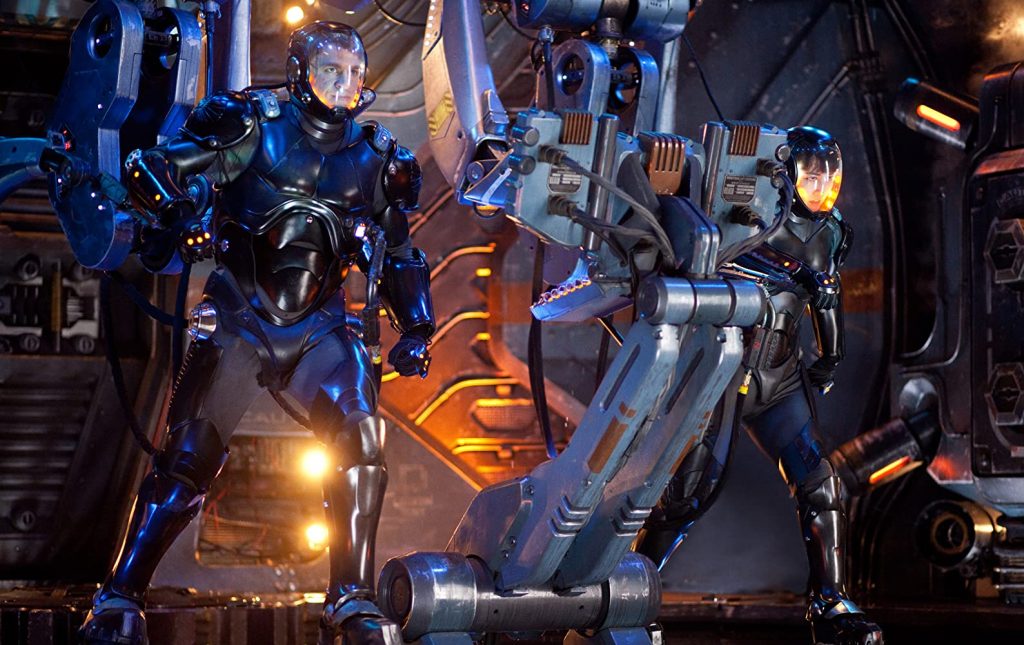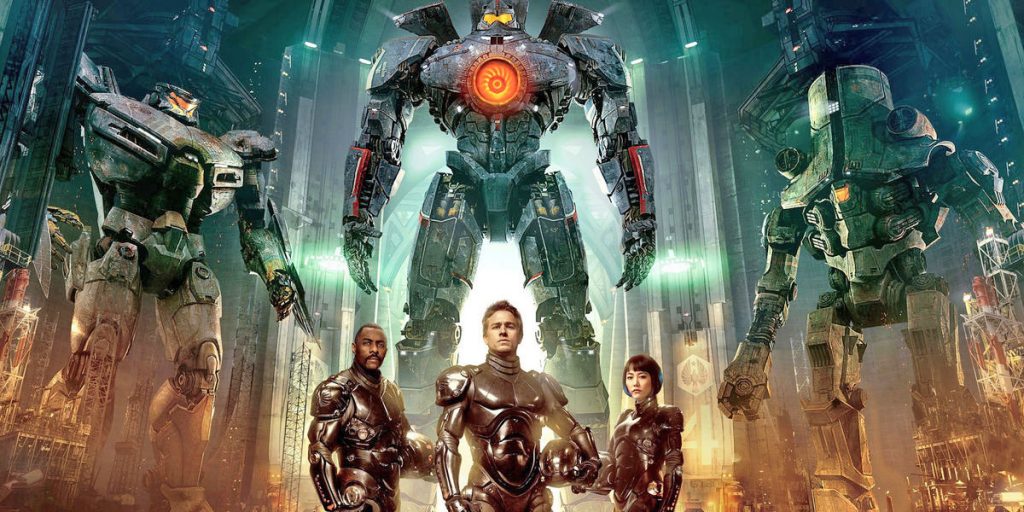Guillermo Del Toro’s Pacific Rim proved that there was a market for Kaiju films in recent cinema, but how did it do so?
On surface level, Pacific Rim is a film about giant Godzilla-like creatures, Kaiju, coming to earth and attacking cities and destroying humanity. Director Guillermo Del Toro (Hellboy, Crimson Peak) manages to understand the foundations of Kaiju genre in a way that very few Hollywood directors have, and, because of this, Pacific Rim stands out from other action films, and even other western Kaiju films. Kaiju films were first created and popularised in Japan, with the 1954 film Godzilla being credited as one of the first official Kaiju films. The term Kaiju comes from the Chinese text Classic of Mountains and Seas, and is used to refer to giant monsters who are seen attacking cities or other Kaiju. The Kaiju films themselves are a sub-genre of Tokusatsu, a Japanese term used to refer to films and television shows that use a lot of special effects and are typically within the science fiction, fantasy or horror genre.
With Pacific Rim making a substantial profit at box offices, receiving positive reviews and gaining a cult following, there’s no denying that, throughthe film, Del Toro brought “epic monster vs humanity” films back into the mainstream after proving that there was still an audience for kaiju films, but I want to discuss exactly how Pacific Rim proved there was a place for the genre within western cinema.
To me, one of the best things about Pacific Rim is that it knows exactly what kind of film it is, and chooses to embrace this. The movie doesn’t take itself too seriously and throws logic to the wind in favour of aesthetic, standing out from other action films and even the Kaiju films that followed it. Del Toro clearly understands that action films can be epic and fast paced, yet still have elements of comedy, as, after all, Pacific Rim is a fictional film about giant robots fighting giant lizard creatures from a different dimension. The characters are exaggerated and over the top, yet they are still given development, regardless of wither they are main characters or supporting.
Before its release in 2013, Pacific Rim was marketed with the promise of epic action, and it does deliver that; however, Del Toro manages to establish an emotional core to the film, an element which is often left out of US-centric Kaiju films. The characters and the film’s world-building give the film more of a selling point that just action, and make Pacific Rim feel closer to the original Kaiju films Del Toro was inspired by – films which had an understanding of fundamental elements of humanity, such as unity.

The impact that films such as the 1954 Godzilla and the 1965 Gamera films had on Del Toro is evident throughout the movie, from the design of the Jaegers and Kaiju to the plot and dialogue. The attention to detail, combined with Del Toro’s originality, makes Pacific Rim not only a Kaiju film, but a love letter to those within the genre that came before it. Del Toro respects the original kaiju films and acknowledges the importance that they have to so many people: for example, the childhood memories associated with the originals, with the director stating that the morals in the film are those which he would have wanted to see as a child.
It’s also clear that Del Toro understands that the Kaiju in previous films were representative of real-life threats. For example, Godzilla, in the 1954 film, is a metaphor for nuclear weapons, representing the fear present in Japan after the Hiroshima and Nagasaki bombings. It is up to interpretation what the Kaiju in Pacific Rim could represent, but the most common conclusion is that they represent nature’s retaliation against man made pollution, given that there are references to global warming throughout the film.
The plot and visuals of Pacific Rim manage to coexist, giving the film an extra level of depth, one that we don’t often see in blockbuster films. Del Toro’s world-building in Pacific Rim draws us further into the world, with character focused sub-plots, and well thought through elements such as a Kaiju black market, where citizens illegally buy and sell Kaiju parts, as well as a cult dedicated to the Kaiju, supporting their destruction of humanity, creating a world that exists beyond the plot. The concept of drift compatibility (the notion that, for two people to pilot a Jaeger, they have to be able to fully understand one another) gives Pacific Rim an emotional depth, as we see the relationships between these characters. It is a feature that Del Toro could have used to create drama in the plot, but instead it is used to further characters’ development and the relationships they have with other characters, as well as their arcs with the plot.
Visually, Pacific Rim stands out against other western-made Kaiju films because of its colour palette. We see both neon lights and earthy tones coexisting throughout the film, which makes the film feel like a refreshing break from the common dark, gritty and ‘realistic’ aesthetic of action. The camera movement in the action scenes is an element worth mentioning, in Pacific Rim the shots that we see in mostly CGI action scenes are limited by reality, we only see the camera go where it would be able to go in real life – aerial shots during fight scenes – as if filmed from a helicopter, bringing us into the film, immersing us in the action because it feels natural.
The characters in Pacific Rim are another aspect that contributed to the popularity of the movie. All ten of the primary characters are given their own arcs, even though the main relationship the film focuses on is the one between Raleigh Becket (Charlie Hunnam) and Mako Mori (Rinko Kikuchi). The film also has characters such as Newt Geiszler (Charlie Day) and Hermann Gottlieb (Burn Gorman), whose onscreen dynamic made them instant fan favourites. The pair of scientists are a duo that, on surface level, would not be expected to be as popular as they are, but Day and Gorman take the classic role of sci-fi scientist and give it a new burst of life in their own way, with their scientist characters playing a more central and fleshed out role in the plot. The cast even includes Idris Elba as Marshall Stacker Pentecost, who truly carries the film, managing to play a stoic character who is the classic war-hero role, yet Elba manages to deliver lines such as the now infamous ‘today we are cancelling the apocalypse’ speech, with a level of conviction that many actors would fail to deliver. Elba manages to take a character that could be a carbon copy of other, similar roles in action films and make the character believable and human.
Overall, Pacific Rim is a celebration of the original Kaiju films, not a copy of them, which, directly or indirectly, led to a resurgence in monster movies such as Kong Skull island and Godzilla: King of the Monsters. But all these lack Del Toro’s clear understanding of the origin of Kaiju films and what they mean – bigger, Hollywood films feel stripped of all feeling in order to make way for action. While kaiju films that followed Pacific Rim saw box office success, they failed to leave as much as a legacy as Del Toro’s film, the main reason being that they were just run of the mill, carbon copy monster films, which lacked the depth Del Toro brought to his film. Companies thought they could succeed following in the footsteps of Pacific Rim, but they failed to understand exactly why the film left the mark on film that it did.

